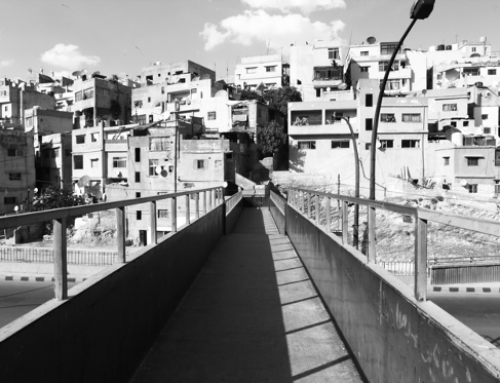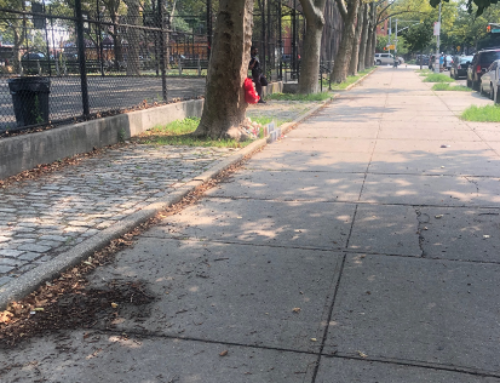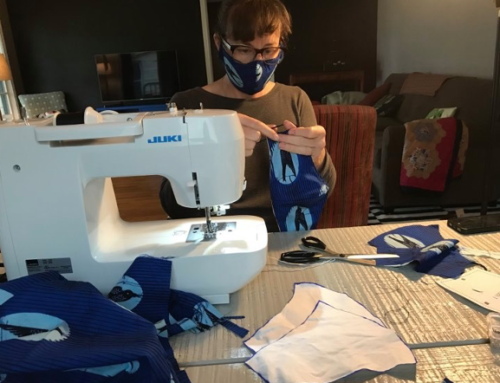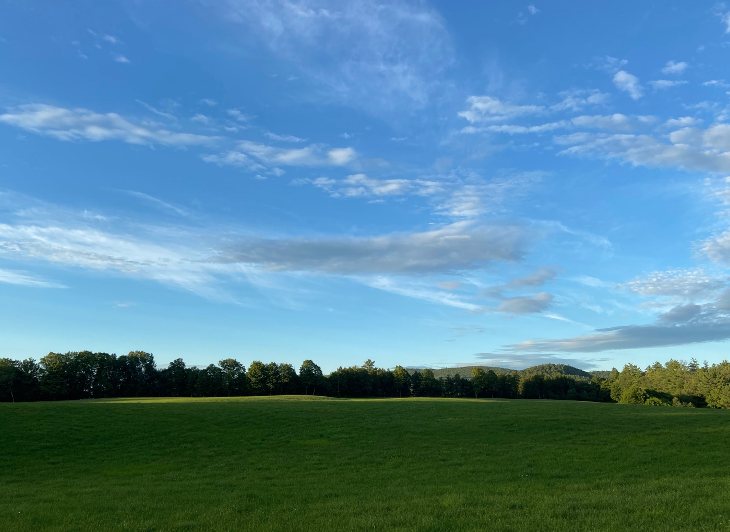
Vermont in summer. Photo by Sienna R. Craig.
Listen to the audio version of this essay here
Even in these shattering months of death and change, Vermont summer is fecund. To find a dirt driveway in the gloaming, between hayfields, stone walls, ferns as tall as toddlers and just as wild, demands that I drive slowly – even on a road I know well.
There it is. A white mailbox with green lettering, not yet patinaed by harsh winters. New enough to be noticeable.
I wonder what the house at the end of this driveway will look like. Especially because, after pulling off the main road and entering a washboard of soil and gravel, the next thing I notice is a very different kind of residence than the dozens of neat farmhouses framed by peonies, now past their prime, that I’d seen on the way here. This home has patches of visible rot on the cladding but a solid standing seam roof.
We are in the whitest state in the union, but this is not Trump territory. Bridge the Connecticut and move into New Hampshire for that. It is, however, a place of scarcity and tenacity. Know your neighbors. Don’t rely on cell service. Keep a stocked freezer if you can afford it.
Many cannot afford it. A physician colleague at the local VA describes the North Country with a haiku clip:
“It’s hardscrabble territory. An aversion to docs who meddle but a vault of stories for those who listen. Remoteness means forty minutes on a dirt road before you see a stop sign. Carhartts. Darned wool socks.”
I drive slowly past this first house and its collection of things: a rusted-out pickup with bald snow tires, several tractors, a well-kempt chicken coop, a Shaker chair made, it seems, of solid wood but with a seat in need of restringing, around whose back hangs a sign that says “FREE.” The chair rests beside a mailbox marked by dents and rust, the number no longer visible. I imagine the postman knows the number anyway.
Thoughts of the postman leads to questions of ballots and access. Community is more verb than noun: turning out, showing up. Still, obstacles persist.
I drive on. My heart quickens at the horses. They are grazing in a field alive with a charm of goldfinches. I know how to be around horses. I exhale. It is the deepest breath I’ve taken in months.
To think of breath produces a knot in my gut. I can breathe.
A log cabin comes into view. A hay barn, half filled. Beyond that, graceful sloping mountains.
The cabin looks dark. I call out. My friend emerges from the porch, looking sweetly out of place in his preppy shorts and loafers, a backwards baseball cap hiding his Brahmin’s bun. To those who don’t know him, his youthful levity might belie the fact that he is a healer: surgeon’s hands, therapist’s mind, priest’s heart.
“Hey, hey!” he smiles.
I know little about our host, save that he is a mentor to my friend and a fellow doctor. He is known for opening up space for patients to navigate need and fear, trust and desire in ways that might otherwise be ignored. This is nothing like a blind date, but to be afforded any new connection in this pandemic moment of distance and dread feels disarming…
I am greeted by a figure in jeans and work boots, a button-down tucked in, belted. Neither old nor young. We do not shake hands, but I notice that his seem capable, weathered, as he takes the bottle of Bordeaux I offer.
My friend has called us together for our council: to strategize about medicine and culture, institutional inertia, care for students, and the urgent need to change structure – even in times of austerity and constraint.
Before we settle into such matters, my friend suggests a walk. “Let’s show her the pond before we lose the light.”
Our host leads us through a clearing. Felled trees scatter like pickup sticks across this landscape. “Pasture has been seeded, but it needs a fence.” Boulders have been moved.
This dusk ramble orients to a lifeworld: vocation beyond profession. The property boundary is a tangle of upturned tree stumps, roots like locked fingers. Our host is recreating a horizon from another time, another country.
“There’s the pond!” My friend is joyous. I will learn that he proposed to his wife in this spot. “Or is it a lake?” he asks our host.
“Lake, I believe.”
Water pools where earth meets sky. There are cattails, a canoe. We hear but do not see frogs.
We walk back toward the cabin through a thinned forest. Its spareness is about making room, although I am not sure for what.
Fireflies flicker around the horses’ hocks. I think about how longing and its corollaries – ache, loss, aspiration – nestle into belonging: this place of equanimity we work to cultivate, we wish to find.
The difference between a pond and a lake is depth.
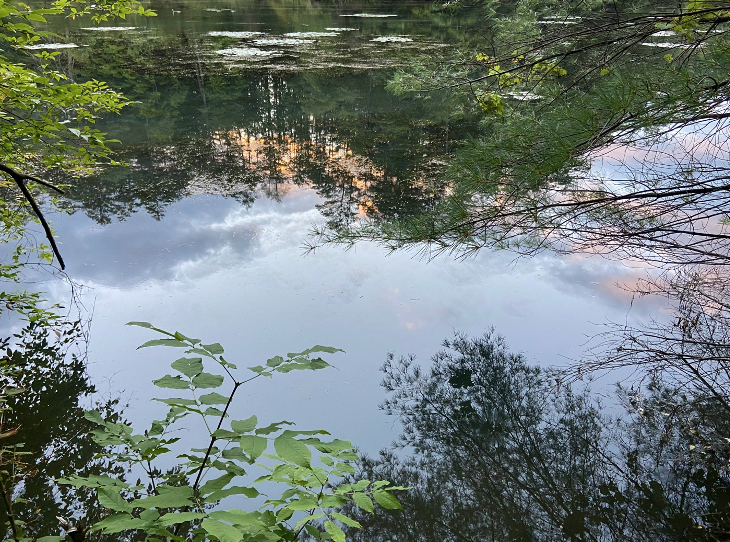
Pond or lake. Photo by Sienna R. Craig.
Cite as: Craig, Sienna R. 2020. “The Forest of (Be)Longing.” In “Flash Ethnography,” Carole McGranahan and Nomi Stone, editors, American Ethnologist website, 26 October 2020, [https://americanethnologist.org/features/collections/flash-ethnography/the-forest-of-be-longing]
Sienna R. Craig is an anthropologist at Dartmouth College. She is author of many books including, most recently, The Ends of Kinship: Connecting Himalayan Lives between Nepal and New York (University of Washington Press, 2020).
